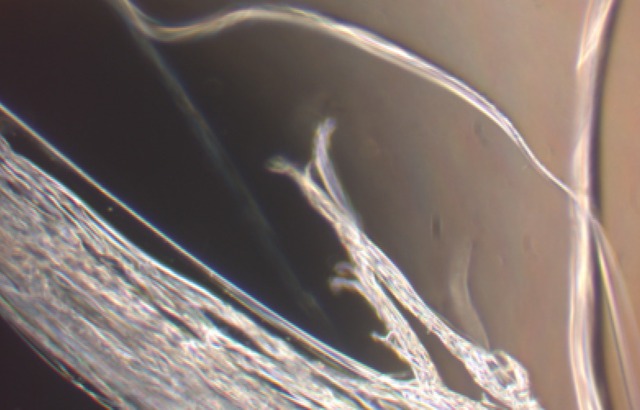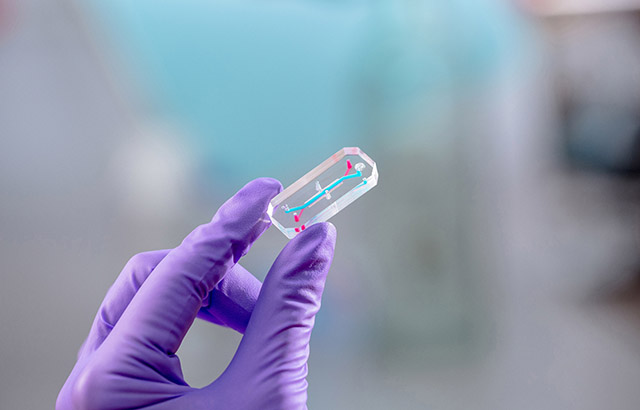The findings are published this week in the journal Nature Communications by researchers from QMUL, University of Trento, Massachusetts Institute of Technology, Florida State University, Tufts University, Technische Universitat Braunschweig and Boston University.
The research, which involved a combination of simulations and experiments, paves the way for “creating new fibres with improved characteristics” beyond those of natural silk, says Markus Buehler from MIT. The work, he says, should make it possible to design fibres with specific characteristics of strength, elasticity, and toughness.
The new synthetic fibres’ proteins were created by genetically modifying bacteria to make the proteins normally produced by spiders. These proteins were then extruded through microfluidic channels designed to mimic the effect of an organ, called a spinneret, which spiders use to produce natural silk fibres.
While spider silk has long been recognized as among the strongest known materials, spiders cannot currently be bred to produce harvestable fibres. This new approach to producing a synthetic, yet spider-like, silk could make such strong and flexible fibres available for biomedical applications. By their nature, spider silks are fully biocompatible and can be used in the body without risk of adverse reactions.
The researchers’ spinning process, in which the constituent proteins dissolved in water are extruded through a tiny opening at a controlled rate, causes the molecules to line up in a way that produces strong fibres.
This project represents the first use of simulations to understand silk production at the molecular level. Using simulations makes it possible to see which proteins give changes in fibre stiffness.
Professor Nicola Pugno, from the University of Trento and Bruno Kessler Foundation, as well as Queen Mary University of London, who worked on the research, said, “This is an important step towards the optimal design of synthetic spider silks and towards a better understanding of the spinning process. Producing bio-inspired spider silks could have interesting applications in the smart textiles of the future.”
Controlling the properties of synthetic silk could ultimately make it possible to create fibres that are even stronger than natural ones, because engineers can choose characteristics for a particular use. For example, while spiders may need elasticity so their webs can capture insects without breaking, those designing fibres for use as surgical sutures would need more strength and less stretchiness.
The research was supported by the National Institutes of Health, the National Science Foundation, the Office of Naval Research, the National Research Foundation of Korea, and the European Research Council.
More Information:



